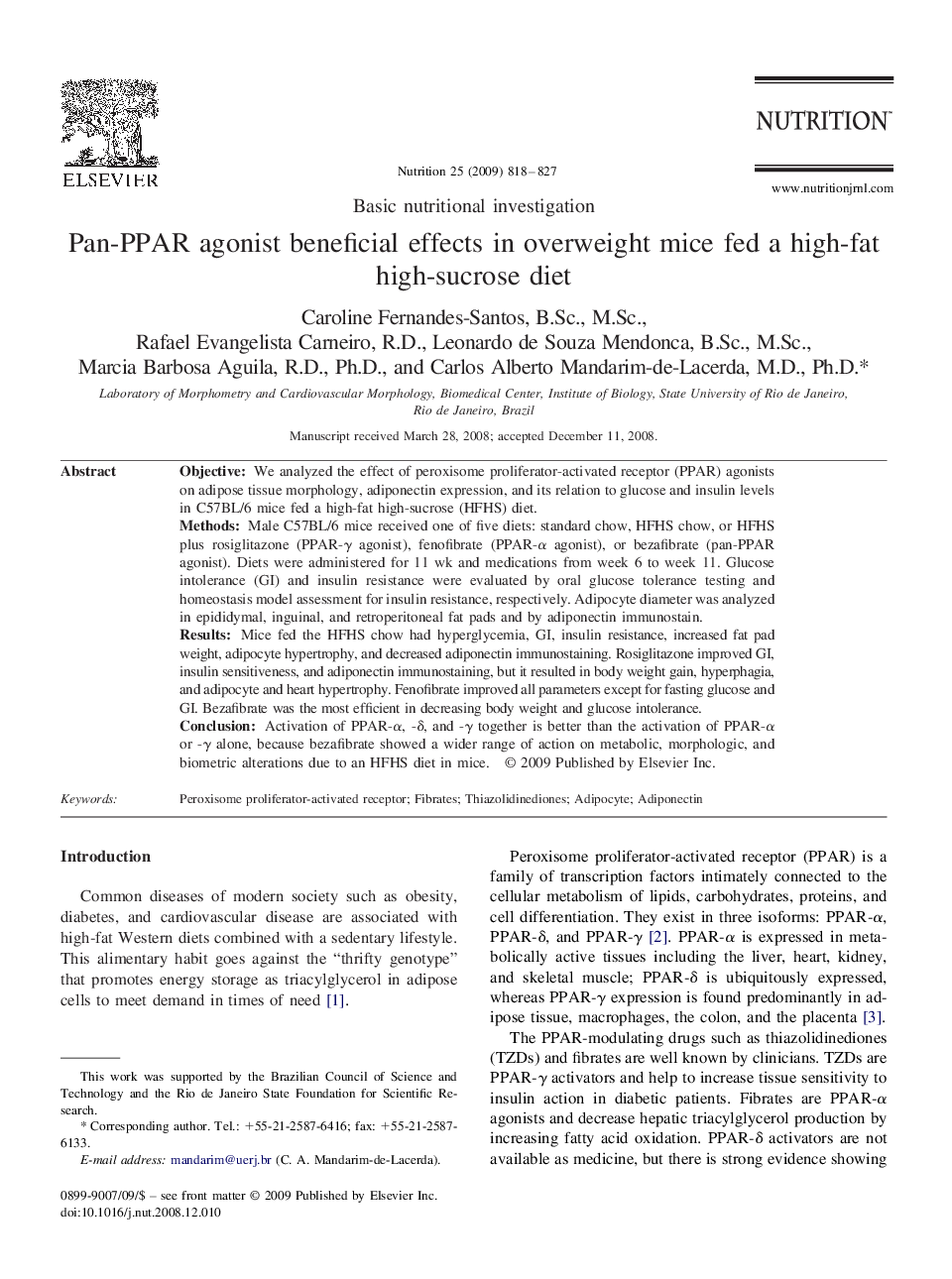| Article ID | Journal | Published Year | Pages | File Type |
|---|---|---|---|---|
| 3277262 | Nutrition | 2009 | 10 Pages |
ObjectiveWe analyzed the effect of peroxisome proliferator-activated receptor (PPAR) agonists on adipose tissue morphology, adiponectin expression, and its relation to glucose and insulin levels in C57BL/6 mice fed a high-fat high-sucrose (HFHS) diet.MethodsMale C57BL/6 mice received one of five diets: standard chow, HFHS chow, or HFHS plus rosiglitazone (PPAR-γ agonist), fenofibrate (PPAR-α agonist), or bezafibrate (pan-PPAR agonist). Diets were administered for 11 wk and medications from week 6 to week 11. Glucose intolerance (GI) and insulin resistance were evaluated by oral glucose tolerance testing and homeostasis model assessment for insulin resistance, respectively. Adipocyte diameter was analyzed in epididymal, inguinal, and retroperitoneal fat pads and by adiponectin immunostain.ResultsMice fed the HFHS chow had hyperglycemia, GI, insulin resistance, increased fat pad weight, adipocyte hypertrophy, and decreased adiponectin immunostaining. Rosiglitazone improved GI, insulin sensitiveness, and adiponectin immunostaining, but it resulted in body weight gain, hyperphagia, and adipocyte and heart hypertrophy. Fenofibrate improved all parameters except for fasting glucose and GI. Bezafibrate was the most efficient in decreasing body weight and glucose intolerance.ConclusionActivation of PPAR-α, -δ, and -γ together is better than the activation of PPAR-α or -γ alone, because bezafibrate showed a wider range of action on metabolic, morphologic, and biometric alterations due to an HFHS diet in mice.
